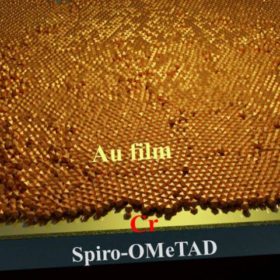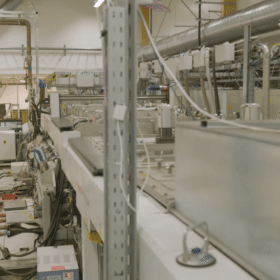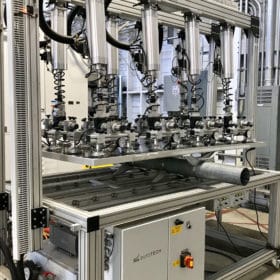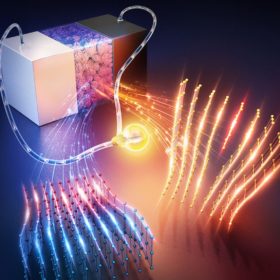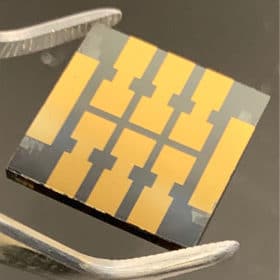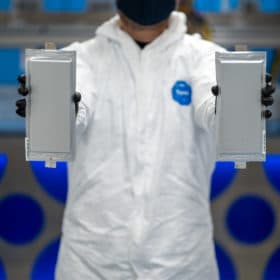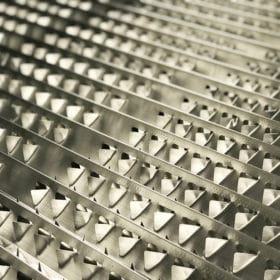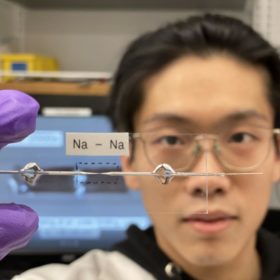A touch of gold for a 19.8% efficient perovskite cell
Scientists in the U.S. fabricated a semitransparent perovskite solar cell that reached 19.8%, and 28.3% in a tandem cell stacked on top of a silicon-heterojunction device. The device relies on a film of gold just a few atoms thick, grown using an innovative seeding method, which has the valuable properties of being both highly conductive and transparent.
Swedish perovskite startup picks up new investment
Norway based renewables investor Magnora has increased its stake in startup equipment supplier Evolar, which is aiming to bring a production line for perovskite solar cells to market. Magnora will now hold a 40.7% stake in the company as part of a long-term deal between the two, with options to further increase the stake available down the line.
Module testing reveals increase in mechanical failures
Last week, testing specialists PV Evolution Labs launched its latest Module Reliability Scorecard, which names more than 100 products from 26 manufacturers as top performers, after being put through their paces in extensive lab testing. This year’s scorecard reveals an increase in modules seeing at least one failure during the testing procedure, with newly added mechanical stress procedures causing the greatest number of failures.
Exploring defects in a solid-state electrolyte
Scientists in the U.S. used sophisticated imaging techniques to observe previously unknown defects in the crystalline structure of a solid-state electrolyte. The scientists theorize that these defects could play an important role in the electrolyte’s performance, and that designing them more carefully into the material could have impressive results.
Perovskites stick together for better performance
Scientists in the U.S. demonstrated an additive that acts as a “molecular glue” within a perovskite solar cell. Treating the cells with this self-assembled monolayer material was shown to greatly improve their long-term performance, whilst also providing a boost to conversion efficiency. And the scientists further point out that the treatment relies on simple processing and readily available materials – good signs for its applicability in manufacturing.
New electrolyte boosts lithium-air batteries
Scientists in the UK reported a breakthrough in lithium-oxygen batteries, achieved by experimenting with different electrolyte compositions. Working with ionic liquids, they were able to tweak the electrolyte recipe to minimize unwanted reactions during battery cycling, and greatly improve on both performance and stability.
Solid-state battery maker picks up $130 million investment
US based battery company Solid Power announced that it has received $130 million in new funding from investors including Ford and BMW. With this backing, the company plans to begin pilot scale production of solid-state lithium-ion batteries suitable for electric vehicles early next year.
Webinar Q&A: A recipe for improved performance
In a recent pv magazine webinar, module degradation experts took our audience through the role of temperature and mechanical stress in causing modules to under-perform. We were treated to a look at some impressive results for modules integrated with Coolback – a solution that replaces the backsheet/rear glass and frame in a conventional panel and promises lower operating temperatures and better mechanical strength. Here, Simon Meijer and Alex Masolin, from Coolback – along with Fraunhofer ISE’s Andreas Beinert – answer some of the questions we didn’t have time for during the live broadcast.
A stable sodium battery, without the anode
Scientists in the U.S. demonstrated a sodium-ion battery with no anode, that retained 99.93% of its initial capacity per cycle. Their design was able to overcome many of the stability issues associated with using ‘pure’ alkali metals in batteries, thanks to carefully minimizing water content in the liquid electrolyte.
A different angle on perovskite defects
Scientists in China took a closer look at the role of defects in limiting the performance of perovskite solar cells, demonstrating a screening effect that could be tuned to make material defects “invisible” to charge carriers, greatly improving cell performance. Using this approach they demonstrate a 22% efficient inverted perovskite solar cell, and theorize several new pathways to even higher performance.

